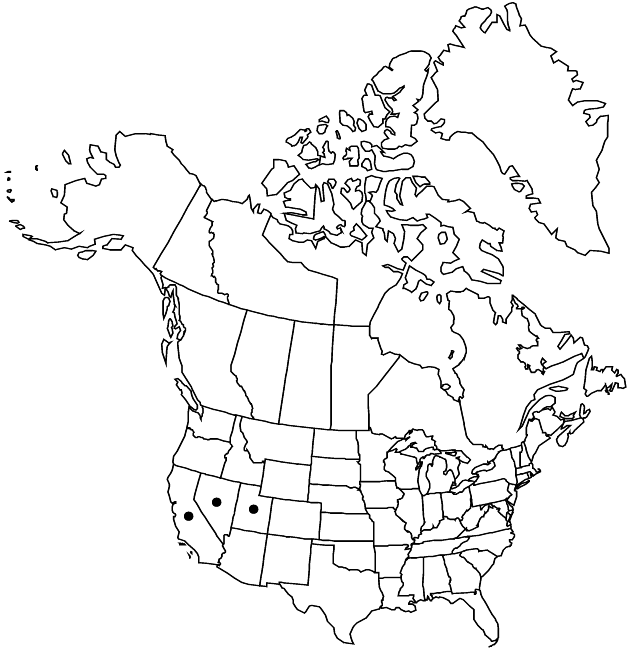Erigeron compactus
Proc. Biol. Soc. Wash. 35: 78. 1922.
Perennials, 2–10 cm; taprooted, caudices branched. Stems erect (scapiform, bracteate), finely strigose, eglandular. Leaves (persistent) mostly basal (leaf bases broadened or not, not thickened and whitish-indurate); blades linear, 4–20 × 0.5–1.5 mm, cauline bractlike or absent, margins entire, faces densely, finely strigose (hairs thin-based), eglandular. Heads 1. Involucres 5–8 × 7–17 mm. Phyllaries in 2–3(–4) series, finely and closely strigose (hairs thin-based), inconspicuously minutely glandular. Ray florets 15–32; corollas white to pinkish, often with an abaxial lilac midstripe, 6–11 mm (tubes and laminae bases glabrous or glabrate), laminae tardily coiling. Disc corollas 4.5–6 mm. Cypselae 2.8–3.2 mm, 2-nerved, margins velutinous-ciliate, faces glabrous; pappi: outer of setae, inner of 30–40 bristles.
Phenology: Flowering May–Jun.
Habitat: Dry, sandy or rocky soil, dunes, sagebrush, pinyon-juniper
Elevation: 1300–2900 m
Distribution

Calif., Nev., Utah.
Discussion
Of conservation concern.
Selected References
None.